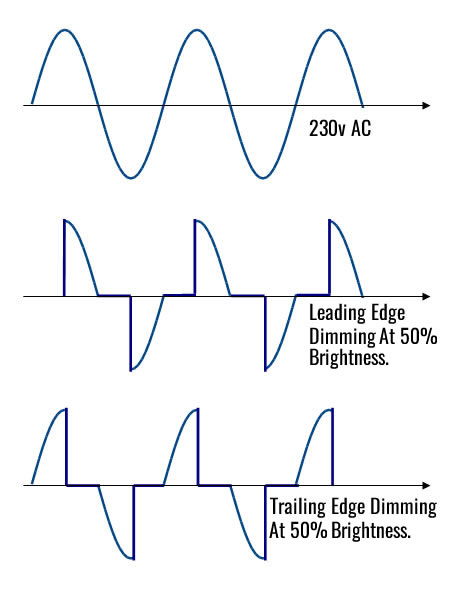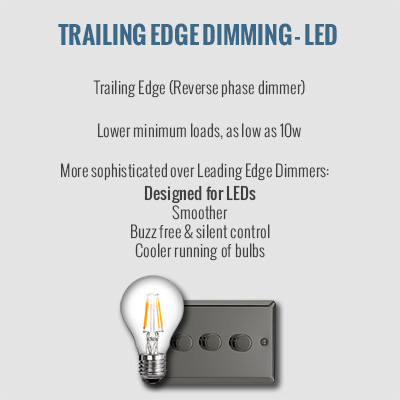Dimmable LEDs are in demand more and more each day, so making sure that your set up works perfectly first time is key. LEDs seemingly last forever and save you up to 90% on your bills, but incompatible dimmer switches can reduce the life of LED bulbs dramatically.
What Is The Right Dimmer Switch?

Having a compatible dimmer switch is something that isn't considered when purchasing light bulbs, but with the introduction of dimmable LEDs you need to be aware of the types of dimmer available (Leading Edge & Trailing Edge) and how they work alongside LEDs.
Leading Edge dimming is the type of dimmer switch that is most commonly used within a domestic environment. They possess a higher minimum load than trailing edge dimmers which makes LEDs very difficult to install on a circuit which has a Leading Edge Dimmer switch. Leading Edge switches are designed for bulbs on a circuit that have an inductive load, which use traditional, magnetic low voltage transformers, which are not compatible with LEDs, as well as resistive loads.
Alternatively, Trailing Edge Dimmer Switches are a lot rarer than Leading Edge Dimmers due to the electronic low voltage transformer compatibility, which are found in both Low and Mains Voltage LEDs. It does also feature the same resistive load compatibility as Leading Edge Dimmer Switches. Alongside this, another feature that sets it apart from Leading edge is the lower loads that they feature.
The full range of Mirrorstone Lighting LEDs are compatible with a range of trailing edge switches, but the range of Varilight Rotary Switches and Touch Sensitive Dimmers are what is most recommended with all Mirrorstone products.

Finding The Right Bulb
Unlike incandescent light bulbs where all of them are dimmable as standard, not all LED bulbs are. If you are looking to have a dimmable set up then you will need to ensure that the LEDs you are installing are capable of being dimmed.





